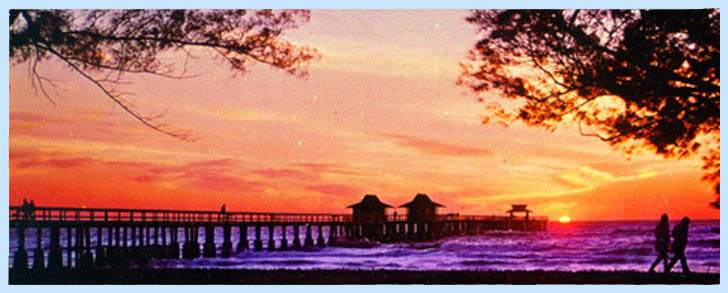Naples Florida History
Henry Watterson...a Notable Man in Naples History
by Bonnie Jean Cousineau, Docent, Naples Historical Society
Visitors to Palm CottageTM, a 3,500 sq. ft. historic house museum located in the heart of Naples' historic district, are sometimes reminded that such luminaries as film stars Hedy Lamarr and Gary Cooper were at one time guests here. Indeed, their celebrity is part of the reason Palm Cottage is listed on the National Register of Historic Places. A far more illustrious guest, however, was Henry Watterson, whose portrait hangs in the Palm Cottage library.
Visitors are told that Watterson was a friend of newspaper publisher Walter Haldeman (who built the cottage in 1895), that he won a Pulitzer Prize, and that he stayed at Palm Cottage for several winters. What most visitors probably do not know is that Watterson was a man of many parts and a nationally known figure. He was, in the words of one observer, "One of the most eminent journalists ever produced in the United States." Although his views were not always consistent (the current and irreverent term is flip-flopping.), he was always an engaging, deliberate and insightful observer of what was happening in America from the mid 19th century through the early 20th century. Not surprisingly, his opinions carried considerable weight.
Henry Watterson was born in the nation's capitol in 1840, so we can safely say he was at the center of political activity at a very early age. He served with the Confederate Army, despite his objections to slavery and secession, and later became a reporter for newspapers in Tennessee, Alabama, and Ohio. In 1868, he became the editor of the Louisville Journal (Kentucky), which he subsequently merged with Haldeman's Louisville Courier, creating one of the most influential newspapers of the time. Jeffersonian in his outlook, Watterson argued in his editorials for a return of home rule in the South, and for the civil rights of African Americans. Interestingly, in the next century, he was not as tolerant of Women's Rights, and barely acknowledged their right to vote.
Watterson served in Congress, albeit for only one year when he completed the term of Edward Parsons, and supported Samuel J. Tilden for president. He also received, in 1882, a "smattering of votes for the vice-presidential nomination." An indication of how close he was to the seat of power all through his life is that he met, knew, or was an advisor to virtually every president from John Quincy Adams to Woodrow Wilson. Adams, with whom Watterson met when he was only a child, was considered a "little old bald-headed gentleman who was good to [Watterson]." He attended the inauguration of Lincoln, lobbied against a third term for Grant, and was offered an appointment by Theodore Roosevelt. Watterson was quite critical of the last president he knew, Woodrow Wilson, for he was strongly opposed to Wilson's proposed League of Nations. Earlier, in 1918, his series of editorials urging the United States to declare war with Germany earned him the Pulitzer Prize.
It seems Watterson had much to say on a myriad of subjects, as a perusal of the chapters in his autobiography, Marse Henry*, attests. Among them: "The Real Grover Cleveland:"
"I Go to London;" "Mark Twain;" "Feminism and Woman Suffrage;" "Monte Carlo
-- The European Shrine of Sport and Fashion;" "Stephen Foster, the Song Writer;" and "Political Conventions, State and National." These are only a mere few among the many commentaries Watterson wrote throughout his years as a journalist.
In addition to his autobiography, which is really a collection of vividly told anecdotes concerning the people he met during his career, Watterson published History of the Spanish-American War in 1899 and The Compromises of Life in 1902. Given these dates, we can surmise that he might have worked on these while he wintered at the now-historic Palm Cottage.
If the reader hasn't yet seen the 3,500 square foot Palm Cottage house museum, take time now to learn more about Naples history and heritage through one of our docent-guided tours. In additional to a tour of the house museum, one may stroll through The Norris Gardens or take a walking tour of the Third Street Historic District. Call the office for details, 239-261-8164, or visit our website: Naples Historical Society
Source Material:
Ballotpedia, March 2008; Biographical Directory of the United States Congress; Columbia Encyclopedia; Marse Henry by Henry Watterson 1919; The New York Times, July 15, 1917; NNDB (Tracking the Entire World); Review by Robert Reid, 1956.
|

